Through the Year with Schütz IV
Death – Mourning – Swan Song
On 6 November 1672 (according to the Julian calendar, or 16 November in our present-day Gregorian calendar) Heinrich Schütz, Kapellmeister to the electoral court in Dresden, died there at a great age. The 350th anniversary of his death in 2022 gives us the opportunity to remember one of the most important and pioneering composers in our history of music. Heinrich Schütz’s wide-ranging output allows us to accompany him through the year in almost every combination of vocal music (almost all of his surviving works are vocal), and to commemorate him throughout the whole year with music appropriate to the season.
The (late) fall is traditionally the time to perform requiems and November 2022 marks the 350th anniversary of Heinrich Schütz’s death. That’s two good reasons to dedicate the last part of our short series “Through the Year with Schütz” to compositions on the themes of death and mourning. With these works, we’re primarily dealing with occasional pieces that don’t belong to any larger collections. Of course, the latter also feature works that touch on mortality, but the theme becomes much more tangible in the compositions Schütz wrote following the deaths of individual friends and acquaintances.
First and foremost, we must mention the Musikalische Exequien SWV 279-281, with which Schütz celebrated the memory of his sovereign, Prince Heinrich Posthumus of Reuß (1572-1635; Schütz’s birthplace of Köstritz belonged to his estate). During his lifetime, Heinrich Posthumus had an elaborate sarcophagus built for himself, which he decorated with numerous sacred texts. The sarcophagus was restored in 1995 and has since been on display at various exhibitions. Following the Prince’s death, his heirs commissioned Schütz to set the sacred texts from the sarcophagus to music for his funeral, resulting in the composition of the Musikalische Exequien. Its opening “Concert in Form einer deutschen Begräbnis-Missa” is followed by the double chorus “Herr, wenn ich nur die habe”. It then ends with the magnificent setting of the Canticum Simeonis “Herr, nun lässest du deinen Diener in Frieden fahren”, into which a second chorus (two seraphs and the “beata anima”, i.e. the soul of the deceased) sings the “Selig sind die Toten” (“Blessed are the dead”) (Rev 14:13b). This rather unusual “Requiem” is today one to the Schütz’s most frequently performed works.
Schütz based other funeral compositions on the Canticum Simeonis (canticle of Simeon). This includes the sacred concerto from the Symphoniae sacrae II SWV 352 for 2 violins, bass and continuo, which includes a hand-written dedication to Schütz’s colleague from his Kassel period, Christoph Cornett (1580-1635). This was probably a funeral composition commissioned during his lifetime. Two further motets in six parts, SWV 432 and 433, are similarly based on the Canticum. Schütz composed these to commemorate Elector Johann Georg I of Saxony’s death in 1656. Both motets survive in incomplete forms and had to be reconstructed. Carus offers both a historical reconstruction by Heinrich von Herzogenberg and a modern version by Helmut Lauterwasser. Which do you find most convincing?
Just as Christoph Cornett probably commissioned a funeral composition from Schütz (and Schütz in turn from Christoph Bernhard), so too did the cantor at St. Thomas, Johann Schein, “on his deathbed request that Heinrich Schützen [sic], Kapellmeister to the Saxon Elector, translate into music the beautiful words of St. Paul in 1 Timothy.” The result was the early version (SWV 277) of the well-known motet SWV 388 from the Geistliche Chor-Music. While the printed score of the motet closely resembles the spirit of the larger collection, the earlier version is striking for its unique, madrigal-like ending. Although unsuitable for large choirs, a small ensemble will find this, I believe, to be far the more effective composition.
Alongside such demanding funeral compositions, we find other simpler pieces that were probably intended to be sung at the graveside. One example is the consolatory song “Betrübte Herzen um des Todes willen” SWV 502, which only came to light in 2011. Featuring the inscription “Ein Trost-Lied An die hochbetrübten Eltern” (“A song of comfort to the grief-stricken parents”), it was obviously written to commemorate the death of a child. This is a four-part movement is in the manner of the Becker Psalter, especially since it reveals the composer’s compositional mastery in all its perfect simplicity. At only 18 measures long but featuring six stanzas, it can – like the Becker Psalms – be performed in many different ways: from solo voice with organ, to choir with diverse instrumentation. Each stanza’s instrumentation can also be varied as desired.
As a musicologist, Dr. Uwe Wolf is particularly at home in the 17th and 18th centuries. The focus of his work ranges from the time of Monteverdi and Schütz to Bach and the generation of Bach’s sons and pupils through to Viennese Classicism. He has been head of the editorial department at Carus-Verlag since October 2011. Prior to this, he worked in Bach research for over 20 years.
Heinrich Schütz
Musikalische Exequien I-III
Carus 20.279
Heinrich Schütz
Der 119. Psalm (Schwanengesang)
Complete Works, Vol. 18
Carus 20.918
Only two of the perhaps most personal compositions by Schütz remain to be discussed: the secular lament Mit dem Amphion zwar SWV 501 for voice and continuo written after the death of his wife Magdalena in 1625, and his Schwanengesang (Swan Song) SWV 482-494 from 1671. According to Greek myth, swans sing a wonderful song before they die. For this reason, the final works of composers or poets are today still often referred to as their swan song. Although the cover sheet describes Schütz’s composition somewhat more drily (“The King and Prophet David’s One Hundred and Nineteenth Psalm”), his student Constantin Christian Dedekind (1628-1715) reports that Schütz composed the motets “under the title Schwahn-Gesang, undoubtedly because he considered this to be his last piece.” It is thus music written in the shadow of his own death.
The Schwanengesang is also a work of reminiscence, both theologically as well as compositionally. In Hebrew, the eight verses from each of the psalm’s 22 stanzas begin with the same letter, from Alef in the first section to Tau in the last, giving the psalm its nickname of the “Güldenes ABC” (“Golden ABC”). Schütz also had a personal relationship to this psalm. He wrote verse 54 (“Deine Rechtesind mein Lied in meinem Haus“/“Thy statutes have been my songs in the house of my sojourning”) several times in his family archive, and the funeral composition he commissioned for himself from Christoph Bernhard also would be to set this text. Stylistically, what Schwanengesang is reminiscent of is no less clear: bucking contemporary trends, the motets recall the sonority of Venetian double-choir psalms, with which Schütz will have been familiar from Venice. This gives these motets, with their Gregorian intonations, an eternal, archaic air.
For me, the Schwanengesang would be the first choice for a Schütz concert to mark the 350th anniversary of his death in November. A complete performance is a great challenge, not least due to the considerable length. But, of course, the individual motets can also be performed by themselves or in combination, such as Part 4, which features the verse noted in the family archive and intended for Schütz’s own funeral composition. The two appendices to the Schwanengesang – Psalm 100 SWV 493 and Magnificat SWV 494 – are delightful pieces in their own right. These two hymns of praise (which are in fact earlier separate works) give a joyful, positive conclusion to an otherwise austere psalm which revolves around the laws of God.
Schwanengesang
Heinrich Schütz Gesamtaufnahme, Vol. 16:
Carus 83.275
Heinrich Schütz
Deutsches Magnificat: Meine Seele erhebt den Herren
SWV 494 (1671)
Carus 20.494/50

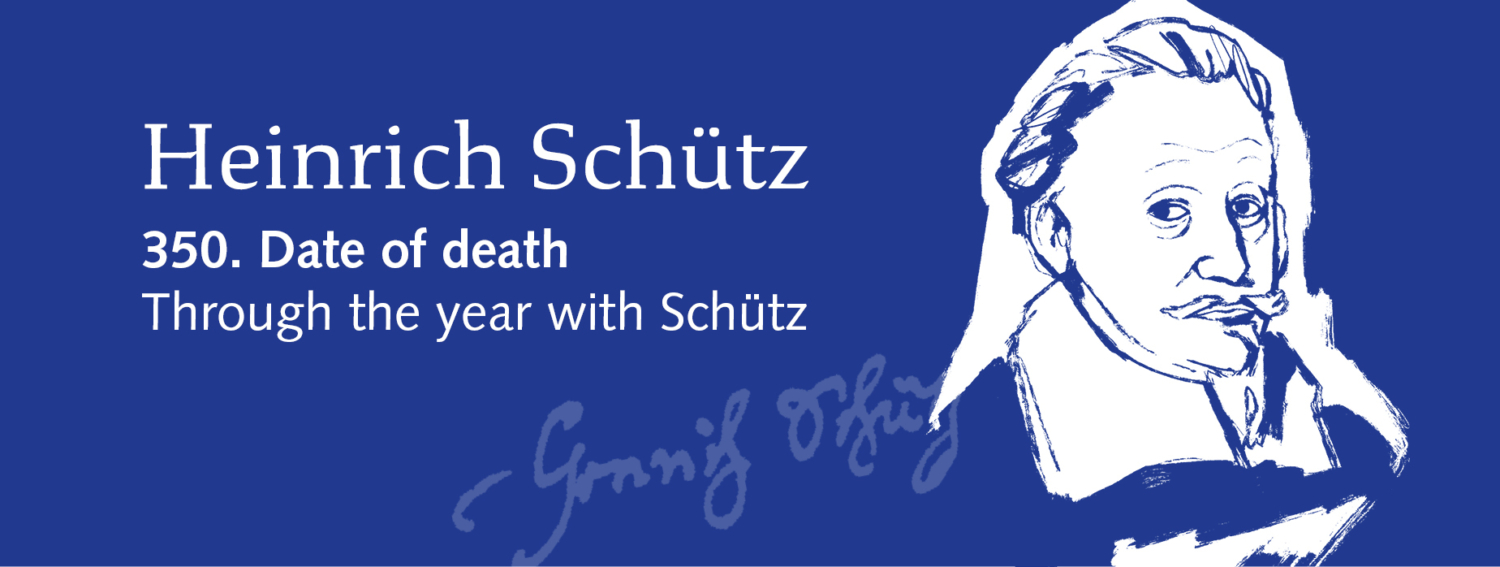
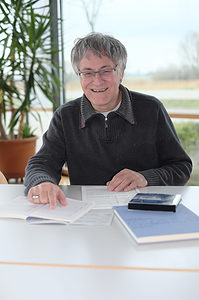
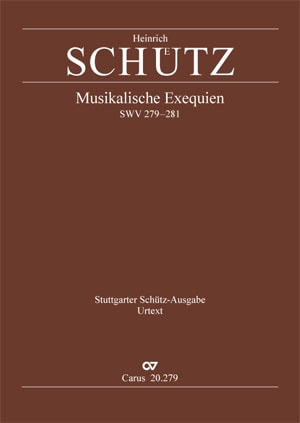
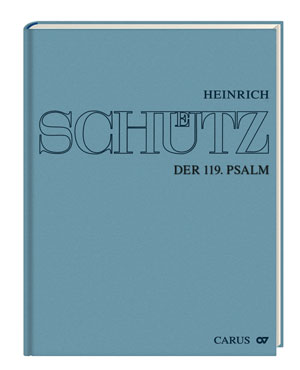
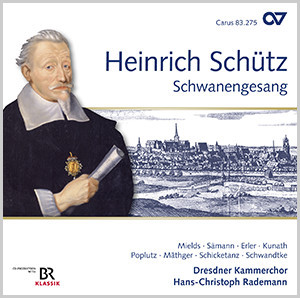
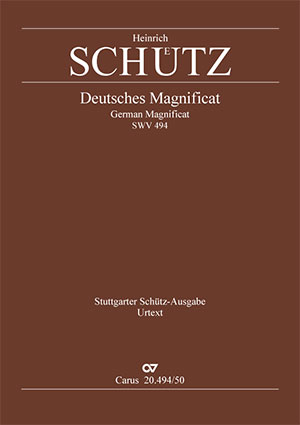













 © Test
© Test
Leave a Reply
Want to join the discussion?Feel free to contribute!